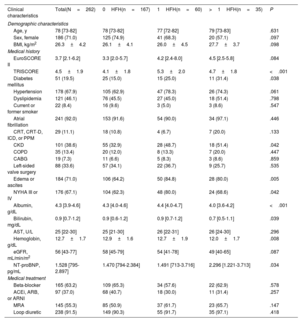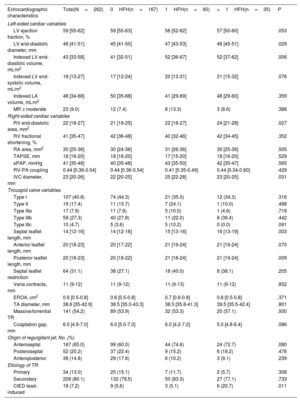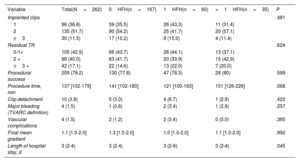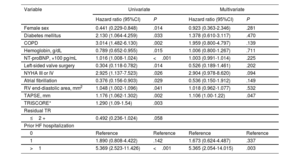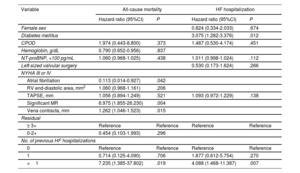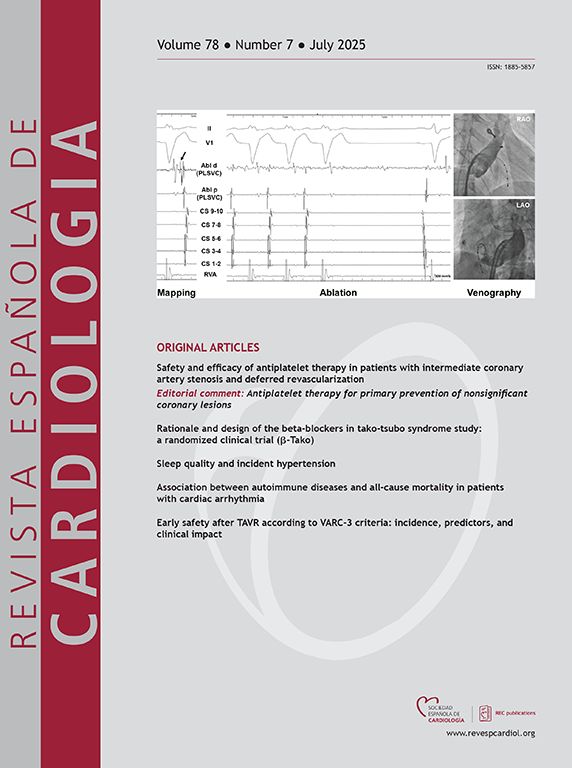
The prognostic impact of a history of heart failure hospitalizations (HFH) in patients undergoing transcatheter tricuspid edge-to-edge repair (T-TEER) has been scarcely studied. This study presents the results of the TRI-SPA registry, which includes data from 15 Spanish centers.
MethodsA multicenter, retrospective registry was conducted, including patients who underwent T-TEER between June 2020 and May 2023. Patients were classified into the 3 groups, based on the number of HFH in the 12 months prior to the procedure: no HFH, 1 HFH, and >1 HFH (recurrent). The primary endpoint was all-cause mortality and HFH.
ResultsOf the 262 patients included, 167 (63.7%) had no history of HFH, 60 (22.9%) had 1 HFH, and 35 (13.4%) had >1 HFH. Patients with >1 hospitalization had more comorbidities, higher surgical risk, and worse functional class; however, no significant differences were observed in the severity of tricuspid regurgitation either at baseline or after T-TEER. After a median follow-up of 365 [160-643] days, patients with recurrent HFH had higher rates of the composite outcome (9.9%, 16.7%, and 43.1%, respectively; P<.001), as well as higher mortality rates (P=.036) and HFH (P<.001). The number of HFH significantly decreased in the 12 months following T-TEER compared with the 12 months prior (P=.001).
ConclusionsRecurrent HFH within the 12 months prior to the procedure was associated with a higher risk of adverse clinical events during follow-up. T-TEER significantly reduced the number of hospitalizations during the follow-up period.
Keywords
Identify yourself
Not yet a subscriber to the journal?
Purchase access to the article
By purchasing the article, the PDF of the same can be downloaded
Price: 19,34 €
Phone for incidents
Monday to Friday from 9am to 6pm (GMT+1) except for the months of July and August, which will be from 9am to 3pm





